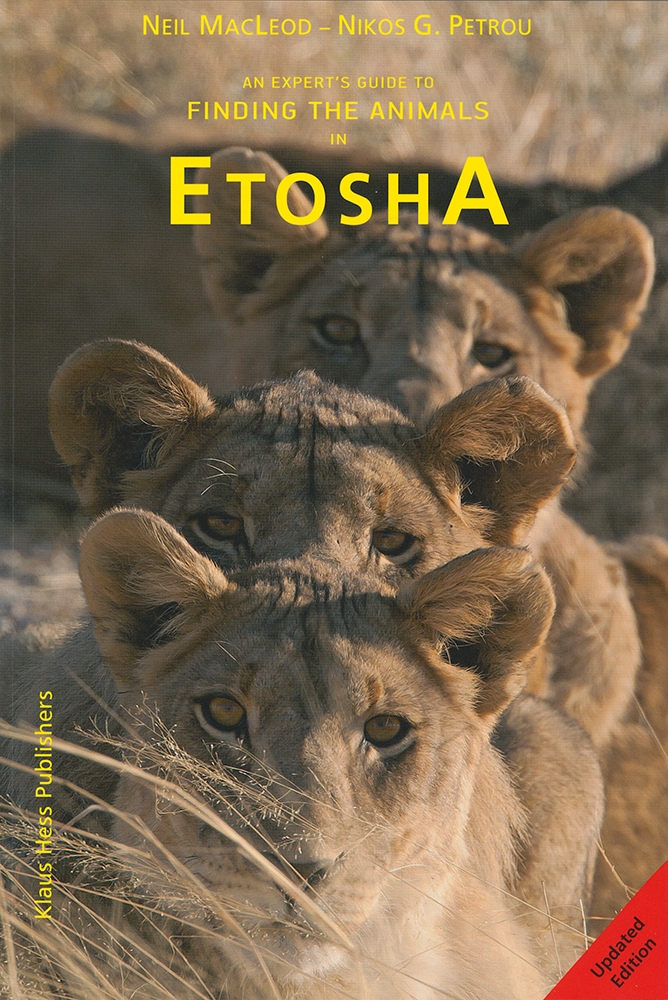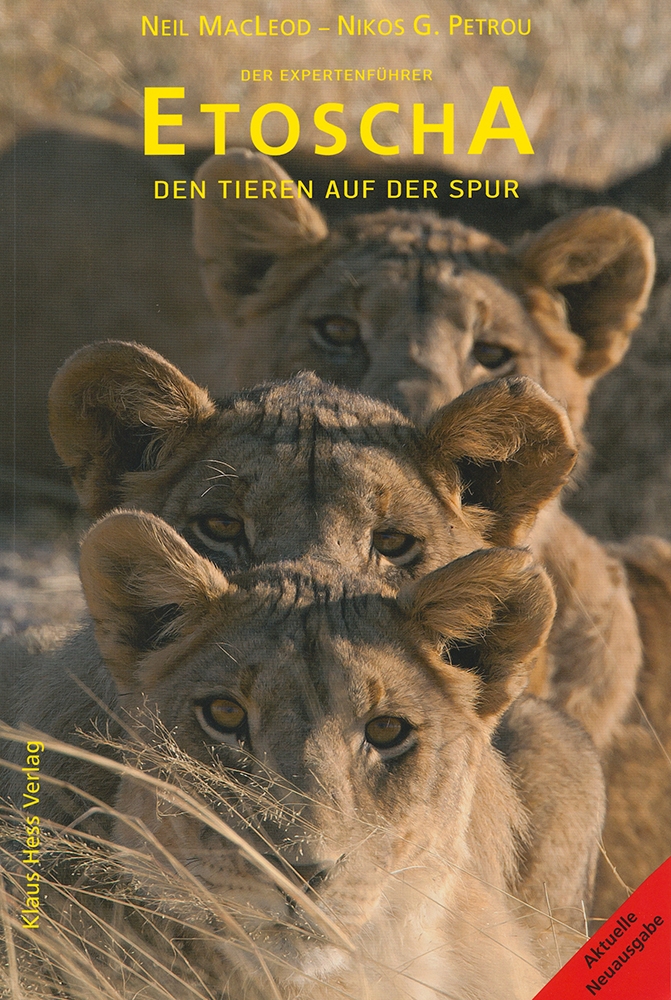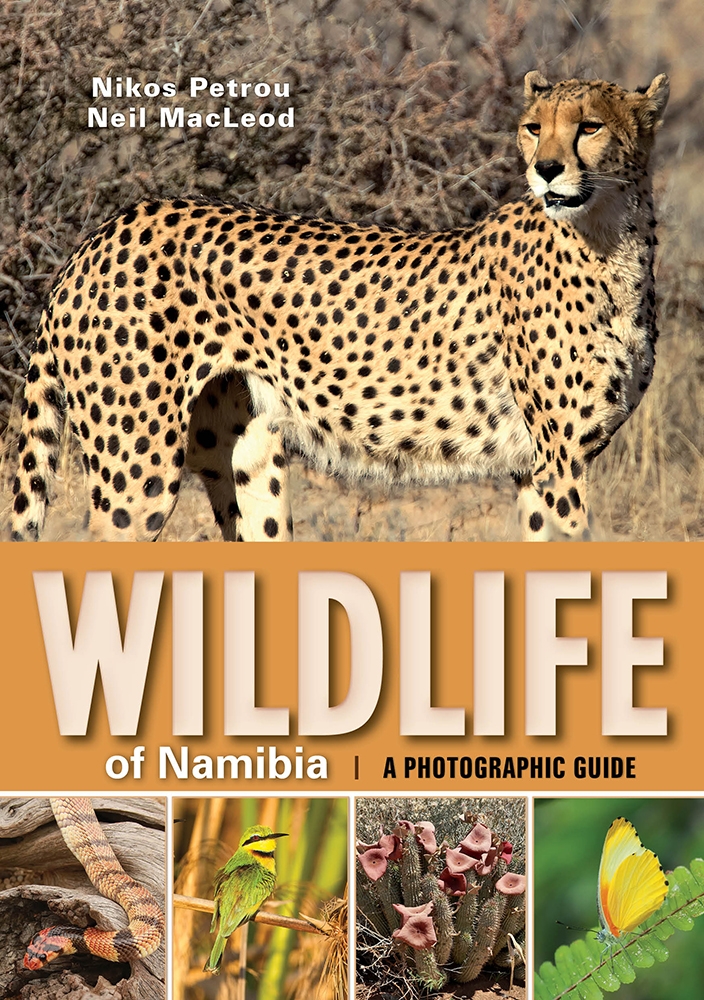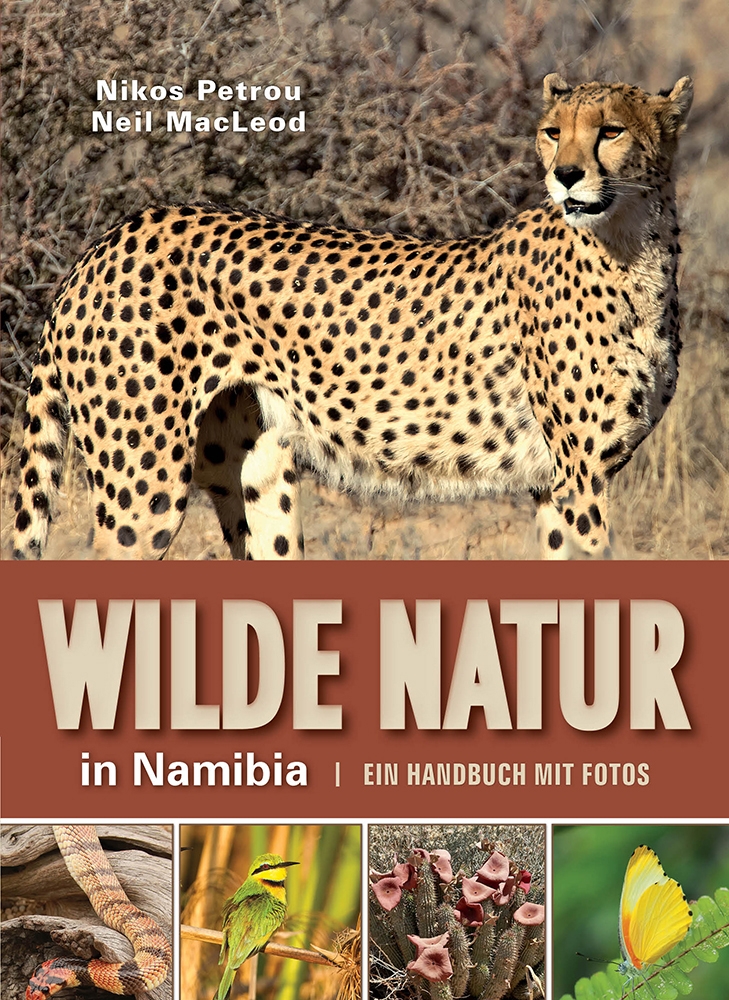Wildlife of Namibia. A Photographic Guide, by Neil MacLeod and Nikos G. Petrou
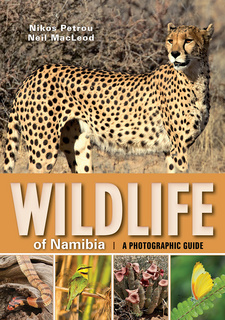
Wildlife of Namibia. A Photographic Guide, by Neil MacLeod and Nikos G. Petrou. Struik Nature, Random House South Africa. Cape Town, South Africa 2019. ISBN 9781775846628 / ISBN 978-1-77-584662-8
Wildlife of Namibia. A Photographic Guide, by Neil MacLeod and Nikos G. Petrou will prove invaluable to visitors to national parks, nature reserves and other wildlife-rich regions of Namibia.
In the past, establishment of Namibia's protected areas was driven by ideological, economic and veterinary considerations and did not fully take into account the country's biological diversity. As knowledge of biodiversity status and trends improved, this issue was addressed, and Namibia is now pursuing an innovative and effective approach, combining different types of conservation schemes for its network of protected areas (PAs). There are 20 state-run PAs: /Ai-/Ais Hot Springs Game Park; Bwabwata National Park; Cape Cross Seal Reserve; Daan Viljoen Game Park; Dorob National Park; Etosha National Park; Gross Barmen Hot Springs; Hardap Game Park; Khaudum National Park; Nkasa Rupara National Park; Mangetti National Park; Mudumu National Park; Namib-Naukluft National Park; Naute Game Park; Popa Game Park; Skeleton Coast National Park; South West Nature Reserve; Sperrgebiet (Tsau//Khaeb) National Park; Von Bach Game Park; and Waterberg Plateau Park. In 2008, the Sperrgebiet (Tsau//Khaeb) became the country's third-largest national park, covering some 22,000km² and placing almost the entire Namibian part of the Succulent Karoo biodiversity hotspot under protection, a major contribution to both national and global biodiversity conservation goals. Additionally, the entire coastline is under national park status, forming a 107,540 km² continuous protected area between the Orange and Kunene rivers. The Namibian Islands Marine Protected Area (proclaimed in 2009) comprises a coastal strip in the southwest, extending from Hollam's Bird Island to Sinclair Island, with an average width of 30km and a total surface area of some 12,000km2, and includes 11 offshore islands and islets, which are key biodiversity locations. A current trend in international conservation is the connection of adjoining protected areas in neighbouring countries to address issues of wildlife movement and to re-establish severed migration corridors. Namibia participates in three such transfrontier initiatives: the Kavango-Zambezi Transfrontier Conservation Area (Angola, Botswana, Namibia, Zambia and Zimbabwe); the /Ai-/Ais-Richtersveld Transfrontier Park established by Namibia and South Africa; and the Iona-Skeleton Coast Transfrontier Park involving Angola and Namibia. Namibia's fragile ecosystems are facing varying degrees of environmental impact, affecting not only the ecosystems and biodiversity, but a large part of the population that relies on ecosystem services and natural resources for its livelihood. A systematic assessment of these threats identified major environmental issues among which three stand out: unsustainable water use, climate change, and increasing impact of tourism and recreation. Increased use of water (a scarce and most precious resource) in farming, expanding urban centres, tourism infrastructure and mining activities is affecting the recharge rates of underground aquifers, which are the main sources of water for the majority of the population, as well as for wildlife in otherwise arid areas. Large-scale water abstraction schemes being promoted along Namibia's northern rivers will affect biodiversity, and there are concerns about pollution of water resources due to increasing use of pesticides and fertilisers. Namibia is considered extremely vulnerable to climate change impacts. Most existing models predict increased temperatures and aridity, with less and even more variable rainfall, while it is unknown when and how the Benguela system, and the associated coastal fog belt, will be affected. Such changes will severely affect species distribution, composition and migration, even survival, as well as agricultural activities. The national tourism industry is overwhelmingly based on healthy ecosystems and biodiversity. Namibia has capitalised on its diverse and pristine landscapes, and its great opportunities for wildlife viewing in natural habitats, by pursuing a high-value, low-impact approach to tourism development, which has contributed greatly to sustained growth in the sector. [...]
This is an excerpt from Wildlife of Namibia. A Photographic Guide, by Neil MacLeod and Nikos G. Petrou.
Title: Wildlife of Namibia
Subtitle: A Photographic Guide
Author: Neil MacLeodP
Photographer: Nikos G. Petrou
Publisher: Struik Nature, Random House South Africa
Cape Town, South Africa 2019
ISBN 9781775846628 / ISBN 978-1-77-584662-8
Softcover, 14 x 21 cm, 160 pages, throughout colour photos
Petrou, Nikos G. und Macleod, Neil im Namibiana-Buchangebot
An Expert's Guide to Finding the Animals in Etosha
The aim of An Expert's Guide to Finding the Animals in Etosha is to increase the possibilities of sighting game.
Der Expertenführer Etoscha. Den Tieren auf der Spur
Der Expertenführer für Etoscha ist ein aktueller und ergiebiger Ratgeber mit 294 Fotos der Tiere, denen sie dort begegnen können.
Wildlife of Namibia: A Photographic Guide
Wildlife of Namibia is an easy-to-use guide to Namibia’s most conspicuous and interesting mammals, birds, reptiles, invertebrates and plants.
Wilde Natur in Namibia
Wilde Natur in Namibia: ein Bestimmungshandbuch für Säugetiere, Vögel, Reptilien, Wirbellose, Flora und Flechten in Namibia.

